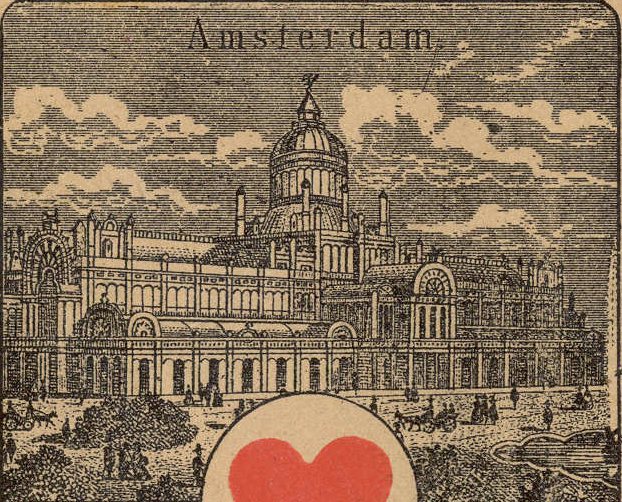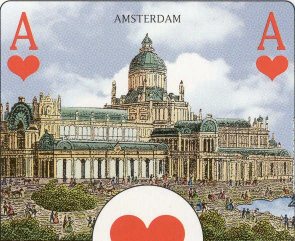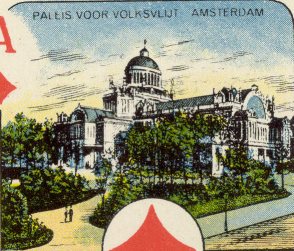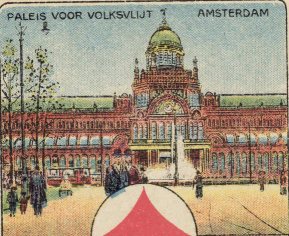PALEIS voor VOLKSVLIJT
PALACE
FOR NATIONAL INDUSTRY (1864-1929)
 |
The palace
was opened in 1864 by the councillor, doctor, and philanthropist Samuel
Sarphati, as part of his vision to end an era of economic and moral
decline and to usher in, in its place, an era of “happiness,
development, achievement, blessing and prosperity for the entire
fatherland.”
The impressive complex was based on London’s Crystal
Palace, and stood on the Frederiksplein on the spot now inhabited by De
Nederlandsche Bank.
|
|

|
Although the
palace started as an exhibition building, its design gradually changed
– dictated by disappointing results. In 1875 a large organ was installed, an
arcade was added to the back of the building in 1883 and in 1890 the large
exhibition hall was divided into a concert hall and theatre. A bar was opened in
1894 in one of the adjoining halls to draw a larger audience. At one point it
was even suggested that the whole building be converted into an exchange.
Besides ballets, concerts, opera's and plays, at the beginning of the twentieth
century the Palace hosted a number of political meetings. Over the years it
housed a market, skating rink, tavern, meeting room and cycling school. In spite
of the constantly changing layout of the building, exhibitions were held until
1929.
|

|
|
 |
| Flemming & Wiskot, Germany, ca.
1925. |
|
unknown maker, probably Dutch, ca.
1920. |
Its pipe organ was recognized as one of the world’s finest.
For decades, it hosted concerts and theatrical productions at Amsterdam’s Frederiksplein
on the Amstel.. The organ was removed for restoration shortly before
the Palace was destroyed by fire in 1929. The Crystal Palace in London suffered a similar fate in 1936.

La
Turnhoutoise, Belgium, late 1920's.
MAP




